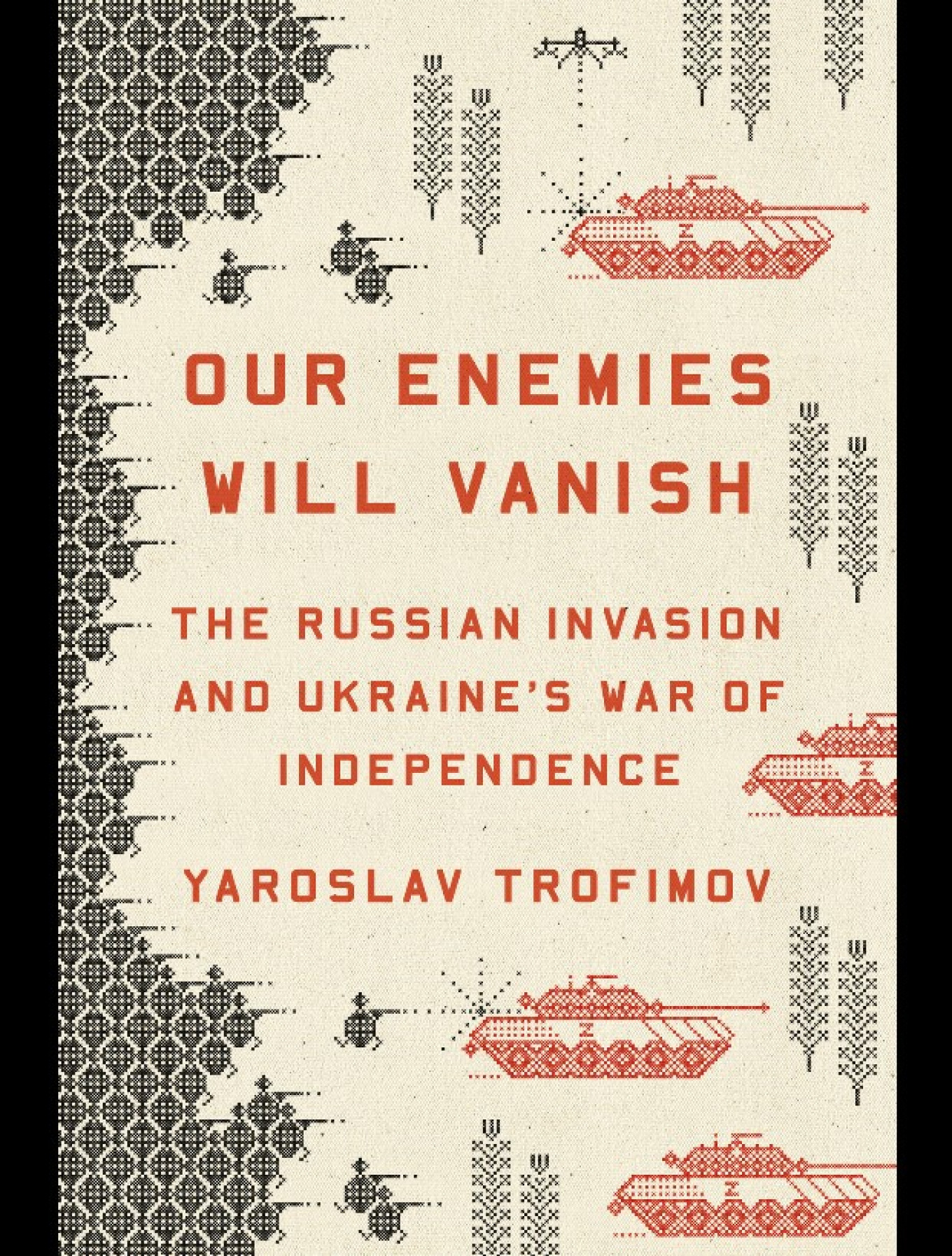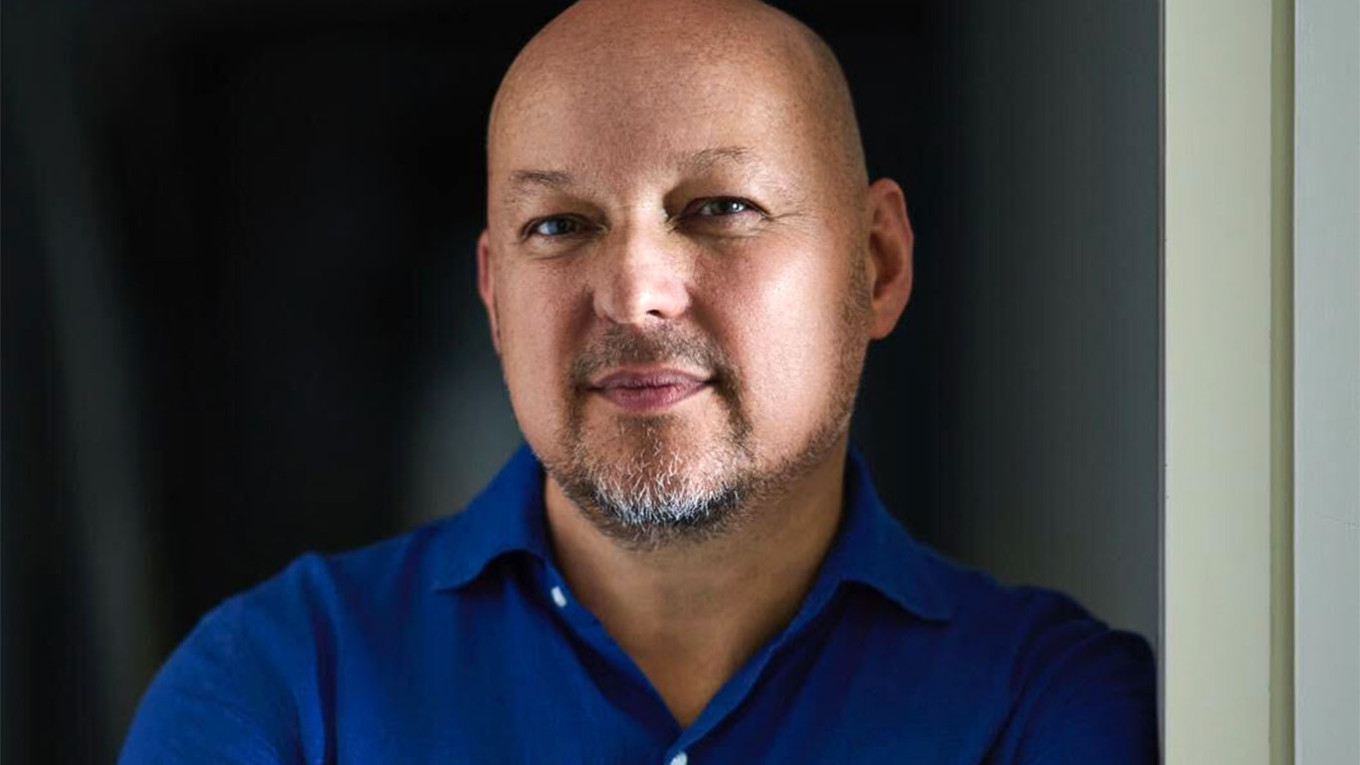As the war in Ukraine enters its third year, the chaos and horror of its early months have already started to fade for many of those watching these events from abroad.
Yaroslav Trofimov’s new book “Our Enemies Will Vanish” — its title coming from the third line of Ukraine’s national anthem — retells the first 12 months of the conflict in meticulous and dramatic detail.
Trofimov is The Wall Street Journal’s chief foreign-affairs correspondent and has twice been nominated for the Pulitzer Prize: in 2022 for his reporting on the Taliban takeover of Afghanistan, and in 2023 for his coverage on Ukraine. He is also the author of two previous books: “Faith at War” (2005) and “The Siege of Mecca” (2007).
Despite his experience as a veteran war reporter, this conflict is a wholly different experience. As an Italian citizen born and raised in Kyiv, “it felt wrong,” he laments, looking at the Botanical Garden where he experienced his first kiss, “to wear on the streets of my hometown the vest and the helmet that I had donned hundreds of times in Iraq, Afghanistan and other war zones.”
Trofimov has an “in” everywhere: on front lines and elite battalions, at the highest levels of government in Ukraine and farther afield, with local citizens and refugees. What results is a sweeping portrait of that first year of conflict that is as impressive in its breadth as it is chilling in its detail.
Trofimov tells the story of people “abandoning their jobs and their families to fight for their homeland.” Chapter titles ring out with phrases that have now gone down in history: “We will fight. We will not surrender”; “Russian war ship, go f*ck yourself”; “We are all here.”
The immediate resistance, which scuppered Putin’s plan for a quick take-and-grab of the Ukrainian capital, is captured by Trofimov as he and his Spanish photojournalist crisscross Ukraine.
When he asks Kateryna Semchenko, a Ukrainian mother of two fleeing the capital, whether she would wish for her husband to come with her rather than stay behind to help defend Kyiv, she replies: “No, he is staying so that we would be able to come back.” And when Russian missiles rain down upon Ukrainian energy infrastructure, causing blackouts across the country, Ukrainians remain steadfast, quickly rebuilding what is destroyed, finding generators and aiding family and strangers alike.
“Russians,” Trofimov writes, “once again underestimated Ukrainian resilience.”
Indeed, it is this theme of Ukrainians defying the odds time and time again which shines through most clearly in both title and text.
But every victory comes at a cost, from the great horrors of Bakhmut, the “city of heartbreak,” to the battle of Terny, where a tough soldier breaks down upon hearing that his teammate has been killed.
Some losses were avoidable, like the failure to destroy the Antonovsky Bridge when Ukrainian forces retreated from Kherson — “one of Ukraine’s biggest blunders in the entire war.” Other losses were not human error but perfidy: several Ukrainian mayors quickly capitulated to the Russians, hoping that in doing so they could save their people — and, of course, themselves.
“Our Enemies Will Vanish” is a nuanced first draft of history, a history that in 2024 has no end in sight.
Our Enemies Will Vanish. The Russian Invasion and Ukraine's War of Independence

From Chapter 14
All over northern Ukraine, General Zaluzhny’s strategy of a thousand cuts—hitting Russian convoys along overextended supply lines and ambushing poorly commanded Russian armored units—was proving successful. It generated a daily stream of videos showing decapitated tanks and disoriented Russian prisoners being removed from burning fuel trucks. Russian T-72 and T-80 tanks usually carry their shells in a ring within the turret. If a tank is hit by a Javelin or another antitank weapon, this can trigger a powerful explosion that usually kills the crew and makes the turret fly off. In military slang, this is called “lollipopping,” because the turret and the attached gun look like a giant rusted lollipop when separated from the rest of the tank. By the second week of March, there were dozens, perhaps hundreds, of such lollipops scattered in the fields of Ukraine, with more popping off every day.
As a Russian tank column approached the Kyiv suburb of Brovary, Lieutenant Tetyana Chornovol, a former parliament member and investigative journalist, sped to the front line northeast of Kyiv in her red hatchback. She had antitank missiles in the trunk. After the 2014 revolution, Ukraine’s military had begun formally accepting women in combat roles, and on the eve of the Russian invasion some 32,000 women were serving in the country’s armed forces. Voluntary battalions created during the fight for Donbas were especially willing to remove the gender barrier.
On March 9, tanks from the Russian Army’s 6th Guards Tank Regiment rolled without infantry support on the four-lane highway approaching Kyiv, oblivious to the Ukrainian soldiers such as Lieutenant Chornovol lying in wait in the courtyards on both sides of the road. A Ukrainian drone filmed the engagement.
First, Ukrainian soldiers with NLAW missiles hit the front and back vehicles. Lieutenant Chornovol fired from the Ukrainian-made Stuhna antitank system; intended for export, its command display was in Arabic. Her first missile missed; the second hit. Retreating chaotically, the Russian column became a perfect target, struck again and again by missiles and artillery. Minutes later, seventeen tanks and three other armored vehicles were ablaze. It was a rout. The Russian regiment’s commander, Colonel Andrey Zakharov, died of his wounds shortly afterward.
***
Similar scenes unfolded in the wooded terrain to the north and northeast of the Ukrainian capital. Russian columns rushing to Kyiv on February 24 had bypassed the regional capital cities of Chernihiv and Sumy, which remained surrounded but undefeated despite heavy bombardment. In Chernihiv, the Ukrainian Army’s 1st Tank Brigade, which had only returned from Donbas to its base in the area in December, immediately engaged the enemy. While the Russian breakthrough on the right bank of the Dnipro—via Chornobyl and toward Hostomel—was a surprise, Ukrainian commanders had planned for the Russian thrust to Kyiv via Chernihiv on the left bank of the river.
Valentyn Koval, a cheerful, baby-faced twenty-two-year-old from western Ukraine’s Chernivtsi region, received orders to deploy to the forested area near Nizhyn, southeast of Chernihiv, for “exercises” on February 23, a day before the invasion. A lieutenant commanding a unit of Ukrainian Uragan multiple-launch rocket systems, he knew immediately that he wasn’t really going for training. His brigade brought along an unusually large amount of live ammunition: 220mm rockets that, while imprecise, can deliver a devastating blow to personnel and equipment more than twenty miles away.
One of the most momentous events in modern Ukrainian history had occurred in these forests: the Battle of Kruty in January 1918. Then the fledgling Ukrainian state had also faced a Russian invasion aiming to quickly capture Kyiv. When some 6,000 Russian troops commanded by Mikhail Muravyov arrived at the Kruty railway station, they were confronted by a ragtag force of a few hundred Ukrainians, many of them Kyiv university students as young as seventeen with little training. The students fought hard, and delayed the Russians by a few days, blowing up railway tracks and bridges. The Russians hunted down the survivors, executing dozens of prisoners in a massacre that has been seared into Ukraine’s national memory ever since. Pavlo Tychyna, the futurist Ukrainian poet, wrote these lines after witnessing the burial of thirty students killed in Kruty:
Whom did Cain begrudge?
Avenge, oh God!
Above all, they loved
Their beloved land.
***
Once the Russian columns crossed the border, moving across the Desna River from Koval’s battery, local civilians flooded the lieutenant with intelligence. Koval received a call from an old man hiding in a village along the road. “The grandpa kept saying: not now, not now, not just yet. And then he went: I see the damnedest foes, they’re on the road, fire on them, son, now.” That Russian tank convoy was obliterated.
Trained crews like Koval’s worked without rest, jumping from one Uragan vehicle to another and driving from their forest hideouts to fire as other troops loaded up and serviced the systems that had just completed their missions.
An Uragan rocket weighs nearly 620 pounds and needs a special crane to be loaded into the launcher. Koval’s battery’s crane eventually broke down, just as his commanding officer arrived with a request to finish off a Russian column that had been hit but still contained scores of functioning or lightly damaged tanks and other armored vehicles. Some of Koval’s crewmen had served in Donbas in 2014 and were used to nonstandard solutions—so they pulled out their leather belts. Straining their backs, eight men using belts managed to manually pull up and load the rockets. That Russian column was also turned into a smoldering wreck.
When Koval finally had a moment to check the news on his smartphone, he saw that the area where he was operating was marked as under Russian control on the maps. “The internet thought that we are occupied,” Koval said. “But we were still there, fighting for our homes.”
***
Unlike in Chernihiv, hardly any regular Ukrainian forces were based in the neighboring region of Sumy, just twenty miles from the border. As Russian columns drove past Sumy toward Okhtyrka and Kyiv, local volunteers, border guards, and SBU intelligence officers banded together in improvised self-defense groups.
Two fighters named Artyom and Dmytro with experience in Donbas, but who otherwise normally worked as executives for multinational corporations, set up one such platoon after picking up guns on the first day of the war. “The people who joined had no idea how to fight, but they knew that this is our home, and someone needed to defend the home,” Dmytro told me weeks later. “Otherwise, someone else would have knocked on our door to say: you don’t live here anymore.” Their initial priority was attacking vulnerable Russian fuel trucks to disable the Russian military closer to the front lines.
Artyom and Dmytro started off by capturing two abandoned Russian BMPs and a fuel truck. While the truck and one of the BMPs were out of diesel, the second BMP turned out to be fully fueled. It also contained an abundance of weapons, including rocket-propelled grenades. “Our first trophy. Until then, we had just one RPG for the whole platoon,” Dmytro recalled. “After that, life became a little more fun. RPGs aren’t perfect, but they are way better than Molotov cocktails.”
The capture of these armored vehicles marked the beginning of the Sumy insurgents’ transformation into a mechanized force, as more trophy BMPs and BTRs joined the unit. Psychological warfare was key: the fighters tried hard to convince the Russians that their resistance was a formidable force that warranted diverting resources. “We knew they are listening to us on the radio, so we kept talking as if there were seven thousand of us, while in reality it was only three guys.” Artyom laughed. “And they fell for it.”
Quickly, the Russians realized they could be attacked from all sides. Convoys started traveling in large numbers, with 80 to 120 vehicles, for safety. Frequent breakdowns meant that these columns often had to stop to fix the straggler and to reload its cargo and passengers, making them more vulnerable to drone strikes and to Ukrainian artillery. Civilians in almost every village, Artyom said, started passing information to the Ukrainian military. The Russians responded by detaining anyone with suspicious information on their phone, often shipping these inmates to interrogation facilities within Russia. The initial successes made more local men join the resistance. “At first, people were in awe of the Russian tanks,” Artyom said. “But, as it turned out, they catch fire really well.”
Excerpted from “Our Enemies Will Vanish. The Russian Invasion and Ukraine’s War of Independence,” written by Yaroslav Trofimov and published by Penguin Random House. Copyright © 2024 Yaroslav Trofimov. Used by permission. All rights reserved. For more information about the author and this book, see the publisher’s site here.
A Message from The Moscow Times:
Dear readers,
We are facing unprecedented challenges. Russia's Prosecutor General's Office has designated The Moscow Times as an "undesirable" organization, criminalizing our work and putting our staff at risk of prosecution. This follows our earlier unjust labeling as a "foreign agent."
These actions are direct attempts to silence independent journalism in Russia. The authorities claim our work "discredits the decisions of the Russian leadership." We see things differently: we strive to provide accurate, unbiased reporting on Russia.
We, the journalists of The Moscow Times, refuse to be silenced. But to continue our work, we need your help.
Your support, no matter how small, makes a world of difference. If you can, please support us monthly starting from just $2. It's quick to set up, and every contribution makes a significant impact.
By supporting The Moscow Times, you're defending open, independent journalism in the face of repression. Thank you for standing with us.
Remind me later.







